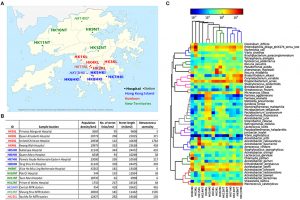OK. So money has microbes on it. Not surprising. And when people find out such information they frequently go overboard in the germophobia. See for example these stories from over the years 1999: Filthy Lucre – Paper Money As A Vector Of Disease 2010: Dirty money 1: Expect germs 2010: How Bad Are Germs on Money 2012: …
Catching up after a couple of busy weeks. Microbes in the hospital Diversity changes of microbial communities into hospital surface environments – Rika Yano – Journal of Infection and Chemotherapy ($31.50) Previous works have demonstrated considerable variability in hospital cleanliness in Japan, suggesting that contamination is driven by factors that are currently poorly controlled. We undertook 16S …
Microbes and money Dirty Money: A Matter of Bacterial Survival, Adherence, and Toxicity – Frank Vriesekoop – Microorganisms (OA) In this study we report the underlying reasons to why bacteria are present on banknotes and coins. (…) We treated the various currencies used in this study as microcosms, and the bacterial loading from human hands as …
The latest papers on microbiome of buildings and other objects used by humans. Today, we have microbiomes of water reservoirs and plumbing pipes, Brazilian money notes, an Italian cheese factory, and a brewery. For more microbiome papers from other sources (both human-associated or environmental), check out my daily blog MicrobiomeDigest.com. Impact of Water Chemistry, Pipe …
Harper Adams University in the UK recently posted a news article describing some intriguing work being done by Senior Lecturer Frank Vriesekoop, who has been investigating, among a slew of other interesting topics, whether banknotes can transfer bacteria, including pathogens. The original paper (unfortunately, not Open Access) in which his work was reported can be found here. …
